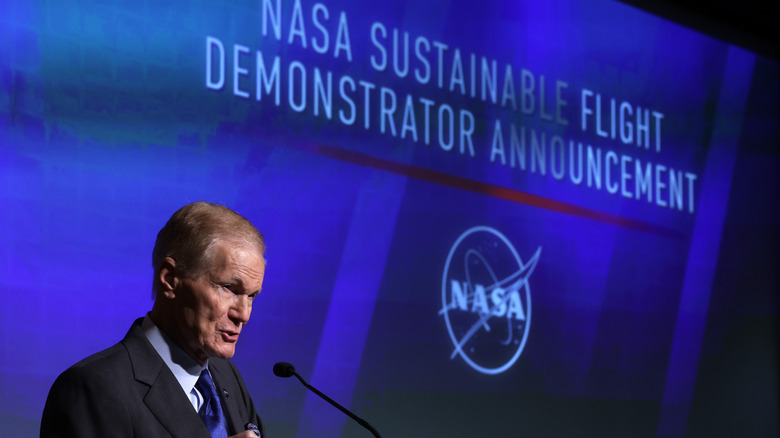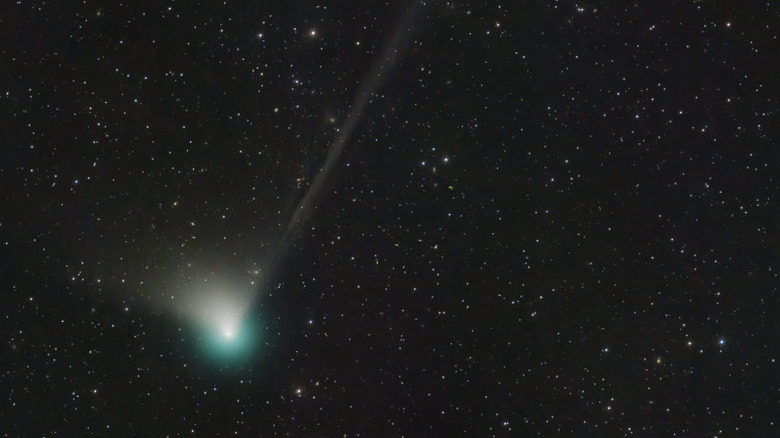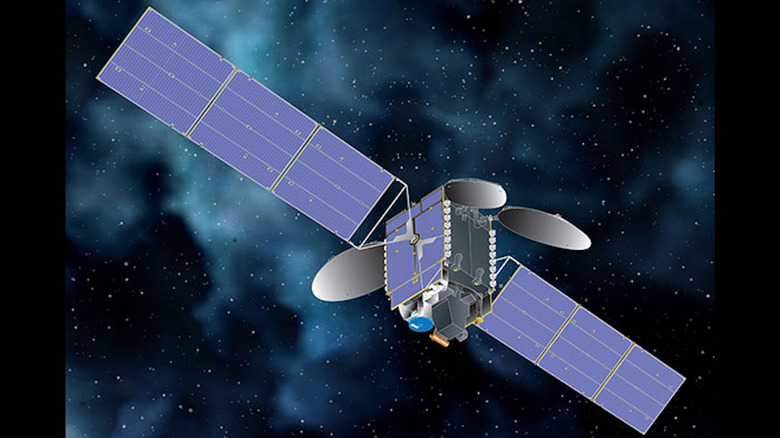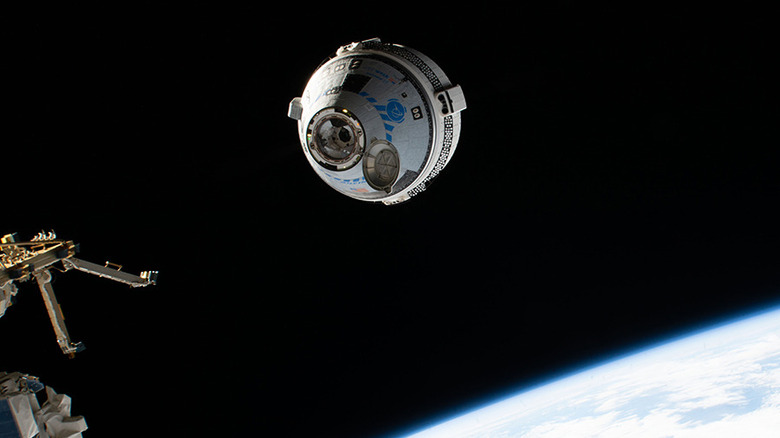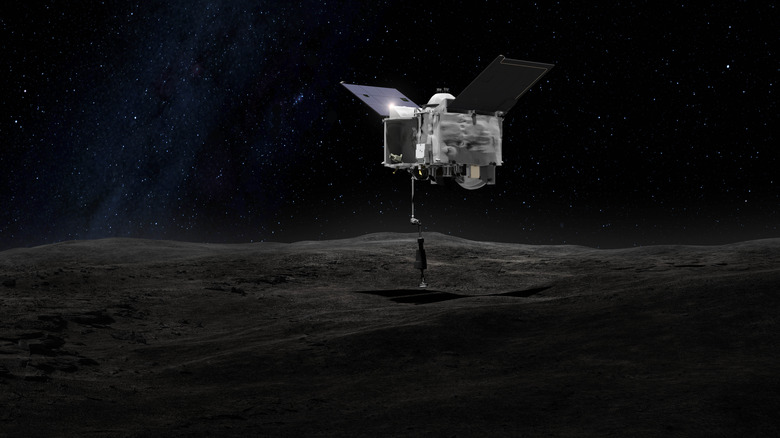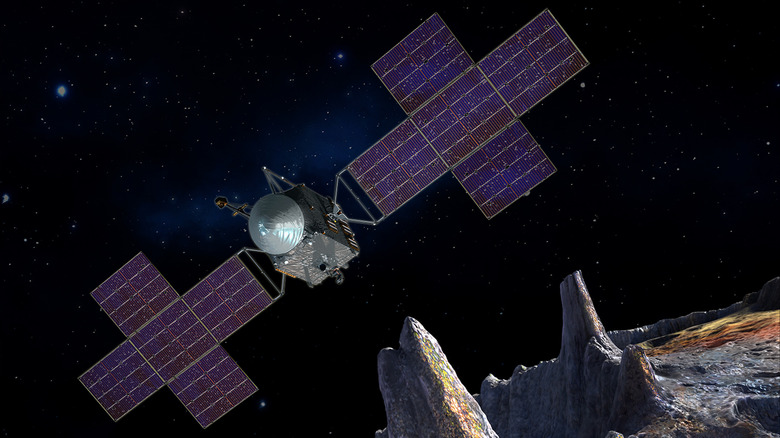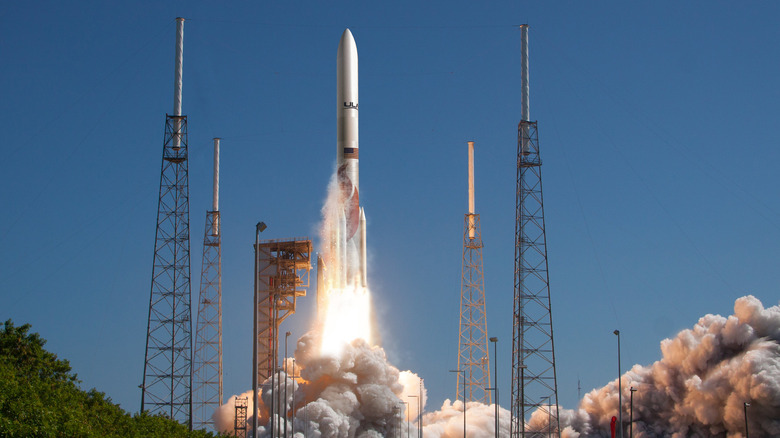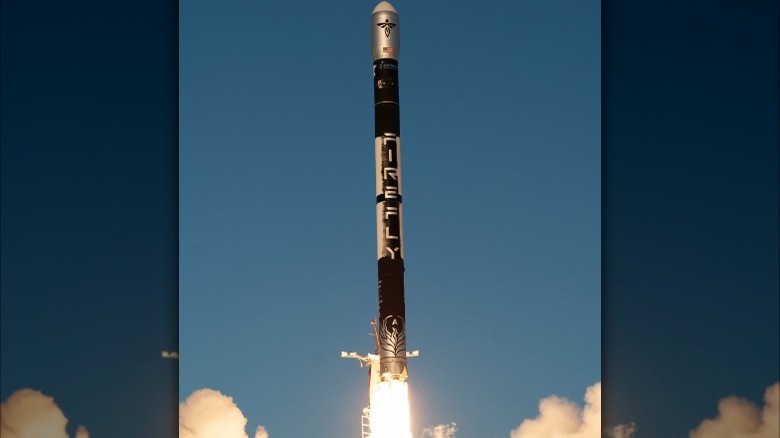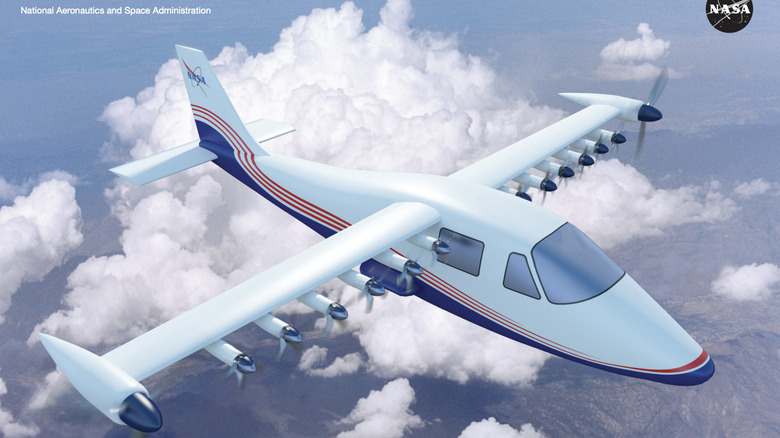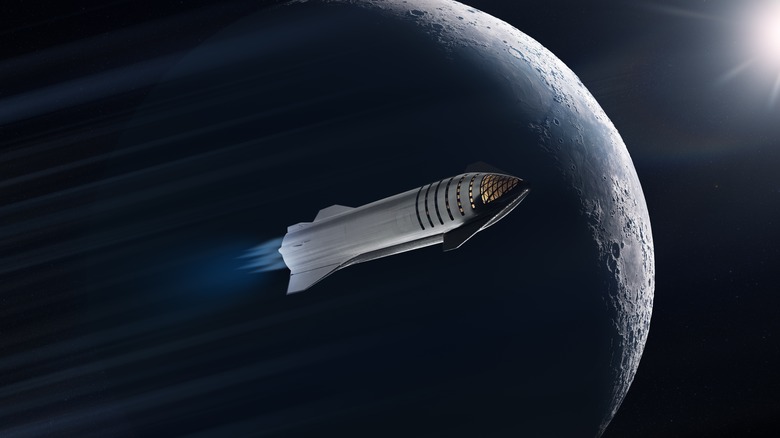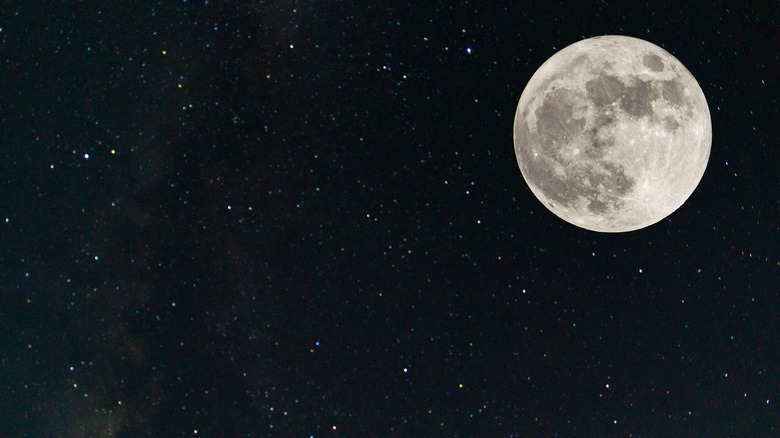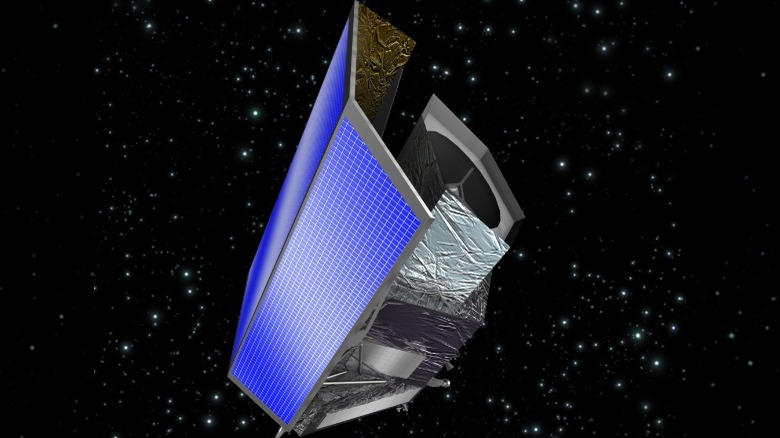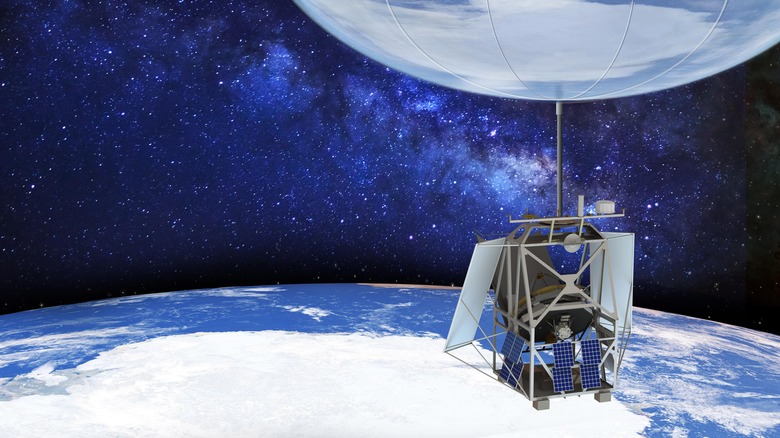NASA Has Big Things Coming In 2023
Another year, another agenda brimming with activity for the National Aeronautics and Space Administration. NASA closed the book on 2022 with a long list of accomplishments, including the historical first images from the James Webb telescope, the Orion spacecraft's maiden flight, and early steps into planetary defense.
The agency may have just wrapped up a very busy and very fruitful year, but that doesn't mean it's downshifting for 2023 — in fact, NASA is continuing on the momentum of several existing projects, plus kicking off some new ones. We expect plenty of activity to spectate this year as NASA brings astronauts — and us ground-dwellers, by proxy — one step closer to a Mars visit, to all-electric aerial travel, and more. Things never seem to slow down at Cape Canaveral and beyond, but here are the most significant milestones to look forward to from the U.S.' space agency, and from space itself, this year.
February 1st and 2nd: C/2022 E3 (ZTF)
Enthusiasts of historical space events should keep their eyes on the sky for the first couple nights of February. According to NASA, a brilliant green comet will blaze across the sky before dawn on February 1 or February 2. The comet, known as C/2022 E3 (ZTF), hasn't been visible for thousands of years — if it's ever even been visible at all (via NPR). NASA first detected the comet earlier this year in March from an observatory facility in California. In mid-January, C/2022 E3 was approaching the sun, and it is now on its journey drawing nearer to earth.
There is a good chance that the comet will be visible to the naked eye in very dark (read: untouched by light pollution) skies, but a telescope or binoculars would better those odds. To increase your chances of observing the comet, find a space outside of the city, locate Polaris (the North Star), and watch for a greenish glow streaking across the sky in the very late night sky, just before dawn.
Astronomers are uncertain of whether C/2022 E3 will ever be visible in Earth's night sky again, NPR reports. The comet may pick up enough speed to be flung out of its orbit and out of the solar system altogether — or it may start another path around the sun.
March 2023: TEMPO launch
The goal of the Tropospheric Emissions: Monitoring Pollution Mission — or TEMPO Mission for short — is to study air quality and pollution from a bird's eye view. The TEMPO instrument, which is slated to launch in March, will measure pollution across all of North America from Mexico City to mid-Canada and all the way from the Atlantic to the Pacific, says NASA. This is the first time in history that a device will be sent to space to continually measure every pollution every daylight hour; TEMPO will measure the levels of key elements to air health and pollution, like ozone and nitrogen dioxide, explains NASA and the Smithsonian.
While the launch of TEMPO will likely come with little media fanfare, the findings — which will be accurate in regions as small as just a couple of square miles, when previous capabilities were regions across 100 square miles — are expected to shed much light on air pollution trends. Around the same time of NASA's pollution monitor launch, Europe and Asia will be sending devices with the same purpose into orbit as well. The three satellites are expected to work cohesively for global air pollution monitoring within this decade.
April 2023: Boeing crew flight test
In just a few months, NASA will see the manned test flight of Boeing's spacecraft, the Starliner, launch from Cape Canaveral Space Force Station. The flight, powered by a United Launch Alliance rocket, will carry two astronauts to the International Space Station and back, according to NASA. This test launch follows a similar unmanned test in early 2022. After the Starliner safely returns its passengers to Earth, NASA will finalize the Boeing spacecraft's certification as an official NASA vessel for regular trips to the International Space Station with a crew aboard.
The Starliner is a small, seven-passenger spacecraft uniquely made with no welded parts (via Boeing), and each vessel can be commissioned for up to 10 trips to space at a low-to-Earth orbit level. Being Boeing's first venture into commercial passenger space travel, NASA is the primary client of the Starliner's service, utilizing the craft for sending astronauts to the space station.
September 2023: OSIRIS-REx
Five years ago, a modest-looking NASA machine touched down on the far-off asteroid, Bennu. The mission, OSIRIS-REx, sought to gather samples from the carbon-rich asteroid, which astronomers believe date back to the first days of our solar system (via Space.com). This fall, Earth is welcoming the little capsule home after taking off from Bennu two and a half years prior on May 10 of 2021. REx will have spent five accumulative years commuting from Earth to Bennu and back, and only about six months on the rock's surface.
According to Space.com, Bennu has a 436-day orbit around the sun and passes close by the Earth every six years. It's around 1,650 feet at its widest, meaning it spins slowly enough for a spacecraft to safely land on its surface and gather samples. Scientists are interested in Bennu for its carbon composition — the same materials that likely made up the asteroids responsible for sparking the beginning of life on Earth.
October 14, 2023: North American ring of fire eclipse
As NASA explains, a few times every year, the Moon aligns itself between the sun and Earth, obstructing Earth's view of the star that we orbit. Sometimes that alignment is just shy of a perfect obstruction, and the sun will peek out from the side in a crescent shape — that's a partial solar eclipse. When the moon happens to be close enough to Earth and perfectly aligns with our view of the sun, completely blotting out the star altogether, that's referred to as a total solar eclipse.
The other type of solar eclipse, an annular eclipse, happens when the moon perfectly obstructs the sun, but is in (or close to) the furthest position it can be from Earth. Because of this distance, the moon cannot fully block the sun's silhouette, so the star's edges are visible in a beaming halo of light appropriately nicknamed a "ring of fire" eclipse. The next ring of fire eclipse happens this fall on October 14, and will be visible across most of the Americas. Visit NASA's page on annular solar eclipse safety for important precautionary measures when viewing an eclipse.
October 10, 2023: (16) Psyche
Another Milky Way asteroid exploration exhibition will kick off this fall. On October 10, a spacecraft will take off for Psyche, a large ore-packed piece of space rock that currently orbits the sun passing between Mars and Jupiter. The significance of this mission lies in the fact that NASA believes Psyche to be the core of a long-gone planet much older than ours, and thus a glimpse into what the earliest days of Earth may have looked like. The agency says that the asteroid is mostly composed of metals like nickel and iron. There is a chance that the asteroid is just a hunk of unmelted metals and not an exposed planet core at all, but Earth likely has a very similar core, and traveling that deep into the planet is currently far beyond our reach, scientists say. The voyage to Psyche will be the first time that NASA explores a new planet made of metal instead of rock and ice.
The journey to Psyche will take three-and-a-half years, placing the spacecraft at the asteroid in 2027. The extraterrestrial body will be studied from orbit for 21 months before the vessel returns home.
Early 2023: Vulcan Centaur maiden voyage
A new generation of space travel will be ushered in this year as we see the maiden launch of the United Launch Alliance's Vulcan Centaur. The Vulcan Centaur launch vehicle will be vaulting a lunar lander carrying materials to the moon, plus two Amazon satellites that are part of the tech giant's Project Kuiper. The Vulcan Centaur is part of an emerging commercial spaceflight industry, available for private and government contracting. Its debut launch was originally scheduled for late 2022 but will now take place in the first quarter of 2023.
The Vulcan Centaur has two successful launch vehicle predecessors, the Atlas V and Delta IV, but it's expected to perform the same space transport duties cheaper, thanks to new United Launch Alliance technology that makes post-launch recovery and refurbishment of the Vulcan's most expensive parts possible (via Space.com). The Vulcan will also introduce a cutting-edge rocket engine to the ULA lineup, one designed by Jeff Bezos' Blue Origin called BE-4.
Sometime in 2023: VICTUS NOX
This major space development of 2023 comes from a different American agency — the United States Space Force (USSF). VICTUS NOX contracts Texas-based Firefly Areospace, Inc., a developer of lunar landers and launch solutions, to commission launch services for transporting a satellite into space ... in 24 hours or less. It is part of the USSF's tactically responsive launch program, or TacRS, and aims to demonstrate the capability of rapidly responding to threats or malicious destruction of a U.S. satellite by getting additional satellites into orbit within a day (via Business Wire).
USSF Space Systems Command Small Launch and Targets Division chief Lt. Col. Justin Beltz said that the VICTUS NOX mission will create an "unprecedented timeline" in rapid response to the space domain. "The United States' launch industry is the envy of the world," Beltz states in the Business Wire release, "innovating to bring more speed and more capability at a lower price."
Throughout 2023: X-57 all-electric aircraft and X-59 supersonic aircraft
All-electric travel is no longer confined to the ground level with NASA's ongoing work on the X-57 Maxwell, a small aircraft that uses no traditional fuel. The aircraft utilizes 14 motors and engines, powered by a 460-volt battery (via NASA). The plane's maximum altitude is only 14,000 feet — a commercial passenger plane cruises at 36,000 in comparison, according to Travel and Leisure – but the project demonstrates the potential in air travel that is quieter and kinder to the environment. This aircraft is expected to take its debut flight this year out of the Armstrong Flight Research Center in California.
NASA's other aircraft project this year is the X-59, a collaboration between NASA and Lockheed Martin that seeks to finally achieve a jet capable of a quiet sonic boom. The X-59 can cruise at 55,000 feet and reaches a top speed of mach 1.4, or 925 miles per house. Its sonic boom is only about as loud as a car door closing, Lockheed Martin reports. Currently, commercial flights at supersonic speed are prohibited over land. This project indicates a future where commercial passenger travel all occurs at supersonic speed, and flight times are cut in half.
Likely sometime in 2023: Unmanned Starship maiden voyage
Last fall, NASA saw the maiden flight of the SLS rocket, currently the most powerful launch vehicle in history. Starship, a rocket developed by Elon Musk's SpaceX, is poised to claim that title for itself pending a successful unmanned flight test likely to occur sometime this year. A January 18, 2023 report from NASA Space Flight says that SpaceX is in the final stages of pre-launch testing and business logistics, including the launch license, but that the timeline left between now and the green light for Starship's launch is "unknown."
NASA Space Flight stated that the many challenges that Starship faces mean that SpaceX even achieving a flawless ascent would be a "significant achievement." An eventual successful flight test of the Starship would be a talisman of significant progress for NASA, which plans to utilize the historically powerful rocket for the upcoming phases of Artemis, which will finally return humans to the moon after five decades. Starship's flight test could take place as soon as this year's first quarter, reports ARS Technica.
Mid-2023: Lunar Trailblazer
Did you know that it was only in 2020 that NASA discovered water on the surface of the moon? In 2023, NASA hopes to obtain a more thorough understanding of how water is distributed on the moon. This will be achieved through the Lunar Trailblazer mission, which will deploy a small satellite to the moon as part of the agency's Small Innovated Missions for Planetary Exploration (SIMPLEx) program (via NASA). The satellite is tasked with studying the geology of the planetary body's surface to detect the presence of water, as well as what form — solid, liquid, vapor — it is in.
Lunar Trailblazer will hopefully uncover information on how sunlight hitting the moon's surface impacts its water, plus how water accumulates and forms permanent ice in the regions of the moon's surface that never face the sun. The small satellite (only about 3.5 meters long) will start its six-month journey to the moon after launching from Cape Canaveral in mid-2023.
Sometime in 2023: Euclid
Euclid is primarily a European Space Agency mission, but NASA made several contributions to the project. Every space mission seeks to answer a question or uncover some unknown, but Euclid is in pursuit of what is arguably the biggest extraterrestrial question of them all: Where did the universe come from? This mission, which will launch sometime this year after many years of development, will set out to create the first cartography of the universe's shadowy side — dark matter and dark energy, to be exact.
Dark matter is simply the "stuff" the universe is mostly made of, matter that isn't visible to human eyes. Dark matter makes up around 95% of all matter in the universe, says the ESA, and dark energy is the invisible and still yet-to-be-understood force that is forcing the universe to expand. Euclid will seek answers to these two mysteries by capturing hundreds of thousands of pictures of the universe with its huge, super-powerful telescope.
December 1, 2023: ASTHROS
Ever wanted to observe a balloon that's bigger than a football field? This December will be your chance, when NASA launches its Astrophysics Stratospheric Telescope for High Spectral Resolution Observations at Submillimeter-wavelengths (ASTHROS) mission. This massive 40-million-cubic-feet helium balloon will take off from McMurdo Station in Antarctica and carry its attached instrument about 130,000 feet into the sky, NASA says. The balloon will be airborne for three to four weeks and aims to study a phenomenon called stellar feedback.
Stellar feedback describes how existing stars in the Milky Way and galaxies beyond ours prohibit or encourage the development of new stars. The gas and dust emitted by stars have a great amount of influence on whether new star bodies will form, and scientists seek to understand this by developing 3D maps of regions where stars form, and by tracking the properties and movements of gases involved in stellar feedback.
